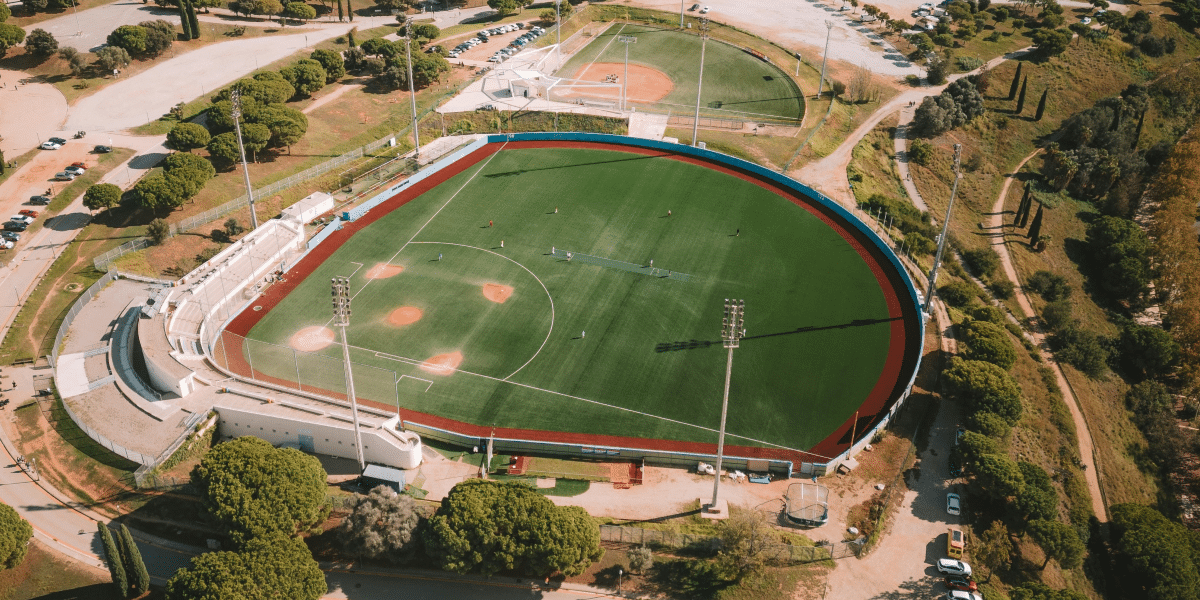Image commercially licensed from Unsplash
In the realm of outdoor sports facilities, sustainability is becoming increasingly crucial. It’s not just about providing a space for sports enthusiasts; it’s about doing so in a way that respects and preserves the environment. Emil Shebelbon, the owner of Three Palms Action Sports Park, is a prime example of how integrating sustainable practices can benefit both the environment and the business. This article delves into various aspects of sustainable practices in operating outdoor sports facilities, drawing inspiration from leaders like Shebelbon.
Energy Efficiency and Renewable Energy Sources
One of the primary areas where sports facilities can become more sustainable is energy usage. Switching to energy-efficient lighting, such as LED bulbs, significantly reduces electricity consumption. Moreover, incorporating renewable energy sources like solar panels can drastically reduce the facility’s carbon footprint. Facilities can also use programmable thermostats and energy-efficient heating and cooling systems to reduce energy use further.
Water Conservation
Water is a critical resource in outdoor sports facilities, especially those with landscaping and maintenance needs. Implementing water-saving practices such as rainwater harvesting, using drought-resistant plants, and installing efficient irrigation systems can significantly reduce water usage. Additionally, facilities can use recycled water for irrigation and maintenance purposes, thus minimizing the impact on local water resources.
Waste Management
Effective waste management is another cornerstone of sustainable practices. This includes not only regular recycling efforts but also composting organic waste and ensuring proper disposal of hazardous materials. Facilities can encourage recycling and waste reduction by providing clear signage and multiple recycling points. Moreover, reducing the use of single-use plastics and promoting reusable materials can further enhance waste management practices.
Sustainable Building Materials
When constructing or renovating facilities, the choice of materials plays a vital role in sustainability. Using recycled or sustainably sourced materials can reduce the environmental impact of construction. Facilities can also look into using materials that offer better insulation, thus reducing energy costs in the long run. The use of non-toxic, environmentally friendly paints and finishes is also crucial in reducing the facility’s environmental impact.
Eco-friendly Transportation Options
Encouraging eco-friendly transportation options for visitors and staff is another way to promote sustainability. This can include providing bike racks, encouraging carpooling, and ensuring easy access to public transportation. Facilities located in larger areas can also consider shuttle services from major transport hubs to reduce the number of individual cars coming to the venue.
Community Engagement and Education
Educating visitors and the community about the importance of sustainability is essential. Facilities can hold workshops and events focused on environmental awareness and conservation. Engaging with local schools and community groups for environmental projects can also foster a sense of shared responsibility toward sustainability.
Biodiversity and Habitat Conservation
Outdoor sports facilities often occupy large areas, some of which can be used to support local biodiversity. Maintaining natural habitats, planting native species, and creating wildlife corridors can help preserve local ecosystems. Facilities can also engage in habitat restoration projects to counteract any environmental impact they may have.
Sustainable Purchasing and Vendor Practices
The choices a facility makes in its purchasing practices can significantly affect its sustainability. This includes opting for environmentally friendly products and working with sustainable suppliers. Facilities can also influence their supply chain by choosing local vendors, reducing transportation emissions and supporting the local economy.
Monitoring and Continual Improvement
Sustainability is not a one-time effort; it requires ongoing attention and improvement. Facilities should monitor their environmental impact, set sustainability goals, and regularly review their practices. Using sustainability metrics and reporting can help in identifying areas for improvement and tracking progress over time.
Emil Shebelbon’s Contribution to Sustainability
Emil Shebelbon’s Three Palms Action Sports Park serves as a shining example of sustainable practices in action. From energy-efficient operations to eco-friendly waste management, Shebelbon’s approach underscores his commitment to sustainability. His facility not only provides a top-notch sporting experience but also demonstrates a profound respect for the environment. This commitment to sustainability sets a benchmark for other facilities and inspires a new generation of eco-conscious sports facility operators.
Conclusion
The adoption of sustainable practices in operating outdoor sports facilities is crucial in today’s environmentally conscious world. By following the example of industry leaders like Emil Shebelbon, facilities can significantly reduce their environmental impact while still providing excellent service to their visitors. It’s about striking a balance between the needs of the sport, the expectations of the users, and the health of the planet. As more facilities adopt these practices, the outdoor sports industry can become a leader in environmental stewardship and sustainability.

















